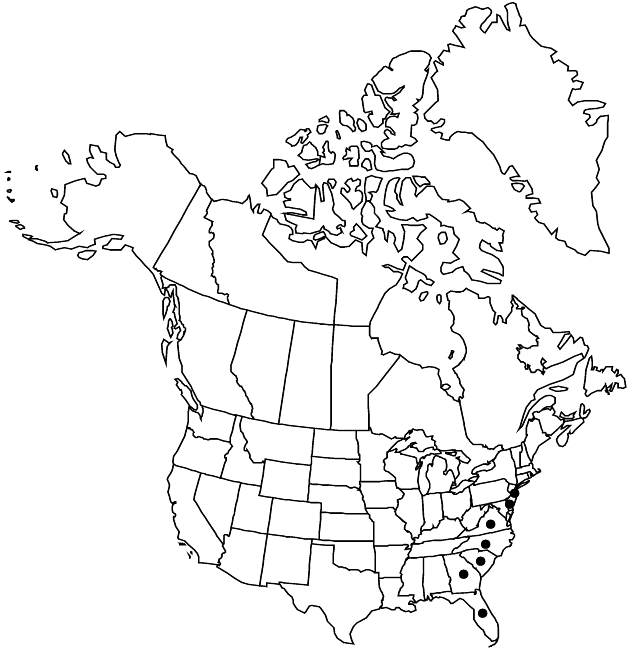Cirsium virginianum
Fl. Bor.-Amer. 2: 90. 1803.
Biennials or perennials, 60–150 (–200) cm; crown sprouts from cluster of fibrous-roots, these often tuberous-thickened. Stems usually single, erect, thinly appressed-tomentose, ± glabrate in age; branches 0–few in distal 1/3, ascending. Leaves very numerous, firm-textured, blades 3–15 cm, thick, ± rigid, linear or linear-elliptic, 0.5–2 cm wide and spinulose, or narrowly ovate, 2–4 cm wide, deeply lobed, lobes remote, spreading, separated by broad sinuses, few toothed or lobed, margins often revolute, main spines slender, 3–5 (–9) mm, abaxial faces white-tomentose, adaxial green, glabrous or thinly tomentose; basal usually absent at flowering, winged-petiolate; proximal cauline usually absent at flowering, well separated, winged-petiolate; middle and distal numerous (30–70+), sessile, well distributed, gradually reduced distally, bases tapered, not decurrent; distal linear, entire or few lobed, ca. 1 cm. Heads 1–10+ in open, corymbiform or paniculiform arrays. Peduncles 10–15 cm (not overtopped by distal leaves). Involucres ovoid to cylindric or narrowly campanulate, 1.7–2.4 × 1–2 cm, glabrous or outer phyllaries very thinly tomentose. Phyllaries in 8–13 series, strongly imbricate, light green to brownish with dark apices, ovate (outer) to narrowly linear-elliptic (inner), abaxial faces with evident, narrow glutinous ridge; outer and middle appressed, bodies entire, apices erect or spreading, muticous to short-spinose, spines ascending to spreading, weak, 1–2 mm; apices of inner all straight and entire or innermost ± flexuous, erose. Corollas purple, 21–26 mm, tubes 8.5–11 mm, throats 6–8 mm (noticeably wider than tubes), lobes 4–8 mm; style tips 3.5–5 mm. Cypselae dark-brown, 4–5 mm, apical collars yellowish, 0.5–1; pappi 17–20 mm. 2n = 28.
Phenology: Flowering summer–fall (Aug–Oct).
Habitat: Moist savannas, pine barrens, coastal plain bogs
Elevation: 0–150 m
Distribution

Del., Fla., Ga., N.J., N.C., S.C., Va.
Discussion
Cirsium virginianum occurs on the Atlantic coastal plain from Delaware to Florida.
Selected References
None.
Lower Taxa
"fine" is not a number."broad" is not a number.